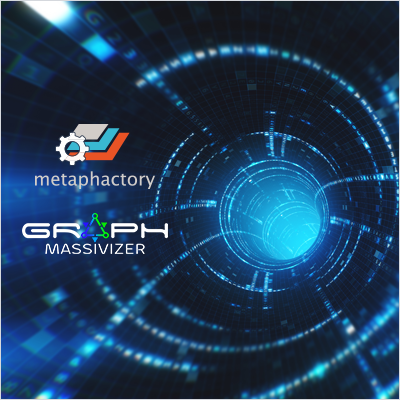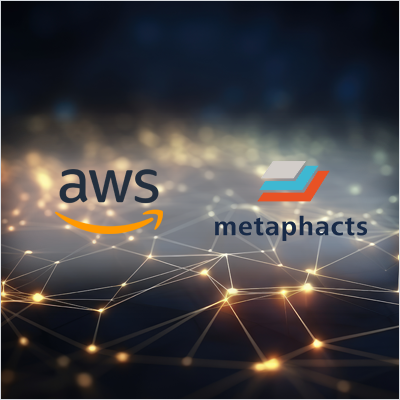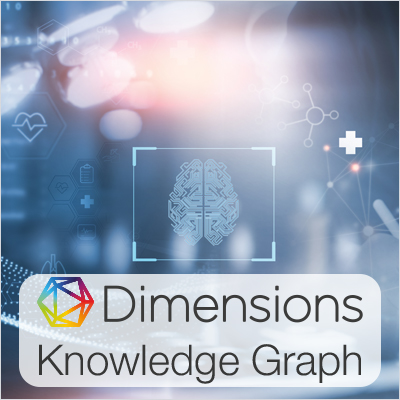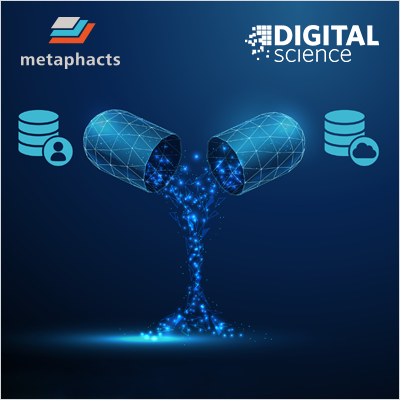How to approach semantic modeling: Perspectives from a metaphacts friend
In this blog post, guest author Veronika Heimsbakk, knowledge graph lead at Capgemini, shares her approach to creating semantic knowledge models for clients. Read this guide to learn how she works together with clients to build semantic knowledge models from the ground up and discover practices you can apply to your own semantic modeling initiatives.
How to create a knowledge graph application with metaphactory and Amazon Neptune
This article is a follow-up in a series where we show how you can use metaphactory to build an end-user application using its dynamic model-driven components, driven by SPARQL queries. It originally appeared on the Amazon AWS blog and was republished and edited with permission from our partners at Amazon AWS.
Exploring app-building in metaphactory with the metaphacts Nobel Prize assets bundle
In this blog post, we discuss the metaphacts Nobel Prize App, where you can explore information and gain deeper insights into the awards, prize winners and uncover any relations between them — all while experiencing the full range of app-building capabilities metaphactory has to offer.
How BKW Energie resolved smart meter choke points with a knowledge graph
This blog post is a recap of a presentation held at the 2023 Knowledge Graph Symposium about BKW Energie's smart meter operations, the data challenges they experienced and how knowledge graphs supported this complex use case.
Using knowledge graph-based LLM for relation & event detection
This post originally appeared on the Ontotext website and is republished and edited with the permission of our partners at Ontotext. In this blog post, we explore Ontotext’s latest knowledge graph-powered solution that works with LLMs to transform raw news content into actionable data for events impact assessment and risk and opportunity detection.
Introducing the Dimensions Knowledge Graph
In this blog post, we discuss the capabilities of the new Dimensions Knowledge Graph and how it helps organizations overcome persistent data challenges in the pharma space and power use cases across the entire pharma value chain. Keep reading!
Configure Single Sign-On in metaphactory for maximum security & control
 In a previous blog post, we described an approach to forward the identity in the form of the user’s metaphactory access token. Here, we’ll go a step further and show you how the Microsoft Azure On-Behalf Of workflow (OBO) can be employed—to not only forward the metaphactory token but exchange it with an access token for the target application, therefore providing a maximum level of security.
In a previous blog post, we described an approach to forward the identity in the form of the user’s metaphactory access token. Here, we’ll go a step further and show you how the Microsoft Azure On-Behalf Of workflow (OBO) can be employed—to not only forward the metaphactory token but exchange it with an access token for the target application, therefore providing a maximum level of security.
We used a knowledge graph to enhance our CMS. Here’s how it went.
Building massive knowledge graphs using automated ETL pipelines
 In this blog post, we’ll explore how to build a massive knowledge graph from existing information or external sources in a repeatable and scalable manner. We’ll go through the process step-by-step, and discuss how the Graph-Massivizer project supports the development of multiple large knowledge graphs and the considerations you need to take when creating your own graph. Keep reading!
In this blog post, we’ll explore how to build a massive knowledge graph from existing information or external sources in a repeatable and scalable manner. We’ll go through the process step-by-step, and discuss how the Graph-Massivizer project supports the development of multiple large knowledge graphs and the considerations you need to take when creating your own graph. Keep reading!
Visualize and explore knowledge graphs quickly by connecting metaphactory to Amazon Neptune
 This post has also been published on the AWS Database blog.
This post has also been published on the AWS Database blog.
In this post, we show you how to get started with knowledge graphs using the metaphactory platform backed by Amazon Neptune. Offered by AWS Partner Network (APN) Select Technology Partner metaphacts GmbH, metaphactory helps you build knowledge graphs and the smart applications that use them.
Fragmented knowledge in pharma: Bridging the divide between private and public data
This post has also been published on the Digital Science TL;DR website.
Despite the increasing availability of public data, why are so many pharma and life sciences organizations still grappling with a persistent knowledge divide? This discrepancy was a focal point at the recent BioTechX conference in October, Europe's largest biotechnology congress that brings together researchers and leaders in pharma, academia and business. In this post, we explore the need to connect data from different sources and all internal corporate data through one, integrated semantic data layer.
Introducing: Next-generation Semantic Search
When it comes to leveraging your enterprise data, having a wealth of quality data is only half the battle. The other half is having the right tools and technology to help you extract valuable insights from it and uncover new opportunities. That’s why we were eager to introduce metaphactory's Next-Generation Semantic Search (Next-gen Search), as part of the metaphactory 5.0 release.
Building explainable and trustworthy recommendation systems: What we learned from IKEA at KGC 2023
In this blog post, we dive into how knowledge graphs play an important role in IKEA's recommendation systems, based on our experience attending two presentations by IKEA at the 2023 Knowledge Graph Conference.
The future of libraries and linked data: How the National Library Board of Singapore modernized its data management
In this blog post, we'll discuss the powerful knowledge graph-based solution that transformed NLB's library and resource management, and how you, too, can leverage these tools to support your organization's data-driven use case!
The importance of the semantic knowledge graph
This article is the first in a series of two where we discuss our perspective on what is considered a semantic knowledge graph, why it's important, and share how they can drive your enterprise goals forward.
The composable enterprise powered by metaphactory
In this blog post, we discuss metaphactory’s app mechanism that supports the composable enterprise approach and look at the following: the components included in an app, the development-staging-production lifecycle of an app, the architecture of an app and an app example.
SSO and Identity Management with metaphactory
In a previous blog post we provided a high-level overview on security-related topics for using metaphactory in an enterprise environment. This post will dive deeper into authentication and authorization using single sign-on and also cover how the authentication process can be integrated with databases or external services such as third-party REST endpoints.
Connecting the best of both worlds: ontologies and vocabularies in metaphactory
The terms "ontology" and "vocabulary" are often used interchangeably. However, more often than not, this leads to confusion among customers who want to semantically model their domain and results in questions about whether there is in fact a distinction between the two and whether both are needed to implement a knowledge graph.
The meta-layers that these terms describe have been captured by different standards (OWL and SKOS respectively) and we at metaphacts believe that there is value in treating both as individual but complementary assets in their own right.
Security best practices with metaphactory
For many of our customers, metaphactory is a key component of their data landscape: their knowledge graph ties together various data silos, provides a semantic access layer based on semantic models, and becomes one of the key systems to support decisions and processes from research to sales.
Keeping all involved systems up and running is a big task that requires many different skills. Besides the operational perspective of working with infrastructure, development, and deployment processes, security plays a growing part in this story.
Data authoring with metaphactory's semantic forms
Forms are a key instrument for collecting and authoring data, while knowledge graphs are the de facto standard for modeling and representing human knowledge. metaphactory delivers a highly configurable semantic form component that empowers you to build user-friendly form interfaces based on the semantic model (ontology1) in the underlying knowledge graph. End users can use these form interfaces to edit existing data, create new data, and interlink resources in the knowledge graph.
In this blog post, we will provide an introduction to semantic forms in metaphactory and discuss how they support data authoring use cases on top of knowledge graphs. To demonstrate how metaphactory's semantic forms work in practice, we will look at a practical example and will augment the Nobel Prize Dataset with information about scholarly articles. The Nobel Prize Dataset is a public dataset available as a Semantic Knowledge Graph, i.e., it is published in RDF and described by an OWL ontology. We extended the ontology with SHACL shapes to also model relevant constraints which can be utilized within the forms. The ontology and dataset include information about all Laureates (Persons, Organizations) who have received a Nobel Prize Laureate Award in a certain Category, or a share thereof, ever since the inception of the Nobel Prize2. Our aim will be to extend this information to include details about scholarly articles published by these laureates.

















